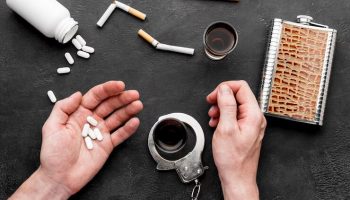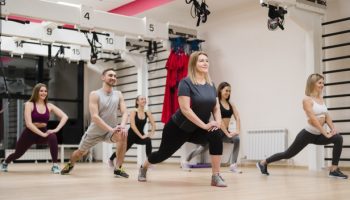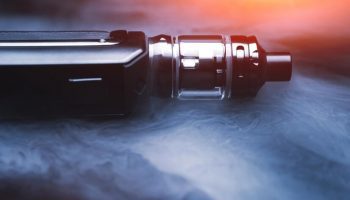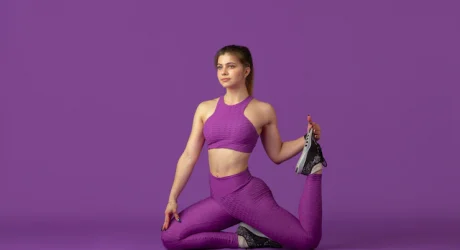Postural drainage is all about using gravity to discharge mucus from your lungs by adjusting your position. It can be used to treat chronic illnesses like cystic fibrosis and bronchiectasis and acute infections such as pneumonia.
If you have a bad cold or flu, you can also use postural drainage. The goal is to get mucus into the central airway so you can cough it out. It is safe for people of all ages and can be done at home, in a nursing home, or at a rehabilitation center.
Postural drainage and percussion, commonly referred to as clapping, are occasionally utilized in tandem. Clapping is when someone claps on your back, chest, or sides with a cupped palm to shake mucus out of your lungs. Vibration, deep breathing, puffing, and coughing are all part of chest physiotherapy, physical therapy, or airway clearance therapy.
Benefits Of Postural Drainage

Some of the benefits that patients can gain from postural drainage are as follows:
- By removing mucus, it reduces the likelihood of a chest infection.
- It is also possible to improve respiratory function.
- It is possible to combine this treatment with manual physiotherapy.
- Coherent patients can use their own beliefs to help themselves and their relatives at home.
- The patient’s active engagement is modest.
- Compared to traditional methods of manual respiratory physiotherapy, the invasiveness is reduced.
Who would be benefited from postural drainage?

Postural drainage will be advantageous for many people suffering from a respiratory condition characterized by excessive secretions. Bronchiectasis is one example, but there are more.
- Chronic obstructive pulmonary disease (COPD)
- A pulmonary abscess
This procedure, which requires little input from the patient, benefits patients who cannot participate in active breathing treatments.
Postural Drainage Positions
The following are Postural Drainage Positions required to drain each lung lobe or segment.
a. Posterior Segment
- Using the back of a chair, the patient reclines 30 degrees (or in bed).
- If desired, vibration and percussion can be applied to either the left or right upper back.
b. Apical Segment
- The patient reclines 30 degrees to the left.
- If desired, percussion and vibration can be applied to either the clavicle or the top of the scapula.
c. Anterior Segment
- To help the patient rest, a pillow is placed beneath their knees, and this position supports their abdomen.
- The clavicle and nipple of a male patient can be vibrated and percussion on either side, if necessary. A female patient may not be able to have this procedure.
d. Right Lateral and Middle Segments
- Both lobes are drained in the same manner.
- To help with the patient’s posture, a pillow can be placed between the patient’s flexed knees.
- The foot of the bed is elevated 15 degrees from the floor (14 inches).
- This is possible in male patients prescribed vibratory and percussion therapy below the right side of their right nipple. This technique may not be available to female patients.
e. Left Superior and Inferior Lingual Segments
- To help with the patient’s posture, a pillow can be placed between the patient’s flexed knees.
- The foot of the bed is elevated 15 degrees from the floor (14 inches).
- If a male patient particularly requests it, the left nipple area can be treated to vibration and percussion. This technique may not be available to female patients.
f. Posterior Basal Segment
- When a patient is lying face down on a bed, a pillow is placed between their hips.
- The foot of the bed is 30 degrees elevated (18 inches).
- If requested, certain lobes might be subjected to vibration and pounding.
g. Lateral Basal Segement
- The patient lies one-fourth of a turn-up on the opposite side of what needs to be drained from the face-down position.
- The foot of the bed is 30 degrees elevated (18 inches).
- Posterolateral portions of the lower back can be treated with vibratory or percussive techniques in the event of an order.
h. Anterior Basal Segment
- The patient rests flat on their back on the other side of the drain.
- The foot of the bed is 30 degrees elevated (18 inches).
- If required, the lower ribs below the axilla might be subjected to vibratory and percussional treatment.
i. Superior Segment
- As the patient lies face down on the bed, a pillow is placed beneath their hips.
- When the mattress is flattened, it is ready for use.
- Vibration and percussion can treat back discomfort below the scapula on either side of the body.
Book an appointment now to answer all your queries. You can book an appointment with the top Physiotherapist in Pakistan through the Marham by calling the Marham helpline: 0311-1222398 or by online booking facility through the website or Marham mobile app.
Frequently Asked Questions(FAQs)
1- What is postural drainage chest physiotherapy?
A postural drainage is a simple approach to using gravity to clear mucus from your lungs by changing postures. It’s used to treat chronic disorders like cystic fibrosis and bronchiectasis and acute infections like pneumonia.
2- Are chest physiotherapy and postural drainage the same?
Chest physiotherapy (CPT) refers to treatments used to mobilize lung secretions. Chest percussion, vibration, and postural drainage are examples of these therapies.
3- Which position is best for postural drainage?
Postural drainage is best done before a meal or an hour and a half after a meal when your stomach is at its emptiest. Sitting, Lying on your stomach, back, or side are some best positions for postural drainage.
Read Also:




























